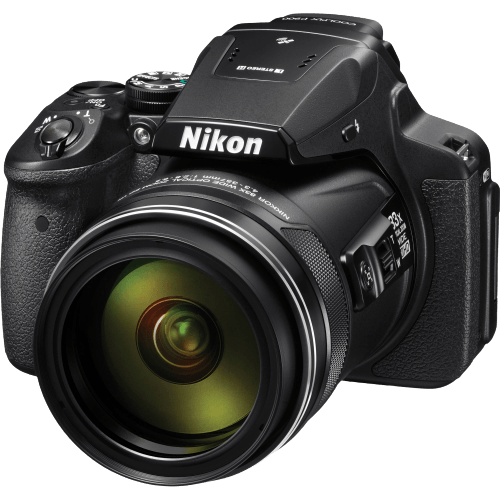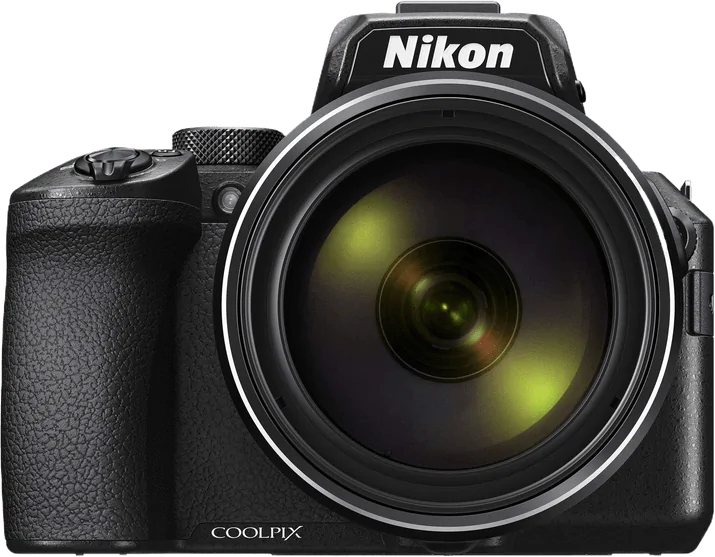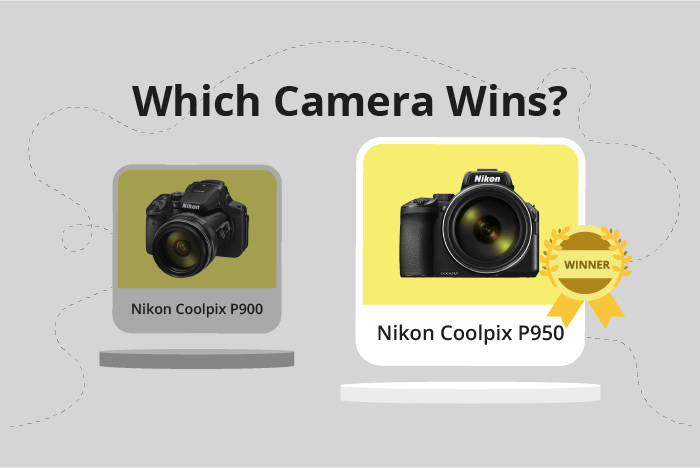Nikon Coolpix P900 vs Coolpix P950 Comparison
Nikon Coolpix P900

Nikon Coolpix P950

The Nikon Coolpix P950 outperforms the Nikon Coolpix P900 with a score of 52/100 compared to the P900’s 48/100. Both cameras are of the bridge type and share similar dimensions, with the P950 being slightly larger and heavier. The P900 was released in 2015, while the P950 was released in 2020.
The P950 has a higher score because it offers improved features and performance. It was launched at a higher price of $799, compared to the P900’s $599, which indicates that it offers more advanced capabilities.
The P900, although having a lower score, is still a decent camera and has the advantage of being lighter and more affordable. It may be a better option for those on a budget or seeking a more compact camera.
Considering the differences in scores, features, and prices, the Nikon Coolpix P950 is the superior option for those looking for better performance, while the Nikon Coolpix P900 may suit budget-conscious buyers who prioritize portability.
Nikon Coolpix P900 vs Coolpix P950 Overview and Optics
The Nikon Coolpix P900 and the Nikon Coolpix P950 both receive an optics score of 53/100, indicating that neither camera stands out as the clear winner in this category. They share several common specifications, including 16-megapixel resolution, 7 fps shooting speed, a CMOS sensor, and image stabilization. Additionally, both cameras have a sensor size of 1/2.3″, which is typical for compact cameras.
However, there are some differences between the two cameras that may influence a buyer’s decision. The P900 has a slightly better DXOMARK score for its sensor at 72, compared to the P950’s score of 69. This means that the P900’s sensor performs marginally better in terms of image quality. The P900 also features an Expeed C2 processor, while the P950 has an Expeed processor. The Expeed C2 processor in the P900 may provide better image processing and overall performance.
The P950 has a 4:3 aspect ratio, while the P900 has a 3:2 aspect ratio. This difference may be significant for photographers who prefer one aspect ratio over the other. Furthermore, the P950 uses a fixed lens mount, meaning that the lens cannot be changed; this may be a drawback for some users who require more flexibility in their shooting.
Based on these specifications, the Nikon Coolpix P900 has a slight advantage in terms of sensor performance, while the Nikon Coolpix P950 offers a different aspect ratio and a fixed lens mount. Ultimately, the choice between these two cameras will depend on individual preferences and specific photography needs. Both cameras have their strengths and weaknesses, and neither one is a clear winner in the optics department.
Nikon Coolpix P900 vs Coolpix P950 Video Performance
The Nikon Coolpix P950 outperforms the Nikon Coolpix P900 in video capabilities, with a video score of 83/100 compared to the P900’s 61/100. Both cameras share some common features, such as a maximum video frame rate of 60fps and built-in time-lapse functionality. However, the P950 surpasses the P900 in terms of video resolution and dimensions.
The P950’s superiority is evident in its 4K video resolution, which allows it to capture videos at 3840 x 2160 pixels. This is a significant improvement over the P900’s standard HD resolution, which only reaches 1920 x 1080 pixels. As a result, the P950 delivers much sharper and detailed videos, making it a better choice for videographers seeking high-quality footage.
On the other hand, the P900 does not offer any clear advantages over the P950 in video performance. Both cameras have the same frame rate and time-lapse features, but the P900 falls behind in resolution and dimensions. Therefore, it is not a better option for those prioritizing video capabilities.
In comparing the video performance of these two cameras, the Nikon Coolpix P950 emerges as the superior choice due to its 4K video resolution and larger dimensions. The P900, while sharing some features with the P950, lacks the higher resolution and dimensions needed for exceptional video quality. Thus, for videographers seeking top-notch performance, the Nikon Coolpix P950 is the clear winner.
Nikon Coolpix P900 vs Coolpix P950 Features and Benefits
The Nikon Coolpix P950 outperforms the Nikon Coolpix P900 in features, scoring 57/100 compared to the P900’s 41/100. Both cameras share several specifications, including a screen resolution of approximately 921,000 dots, the absence of a touchscreen, a flip screen, GPS, and WIFI capabilities. However, the P950 surpasses the P900 in certain aspects, while the P900 has its own advantages.
The P950 boasts a larger screen size of 3.2 inches, while the P900 has a 3-inch screen. This difference gives the P950 a slight edge in terms of display and image review. Additionally, the P950 features Bluetooth connectivity, which the P900 lacks. This offers users more convenience and flexibility when transferring files or controlling the camera remotely.
On the other hand, the P900 has GPS functionality, which the P950 does not offer. This can be a valuable feature for photographers who want to geotag their images or track their shooting locations. Despite this advantage, the P900 falls short in other areas compared to the P950.
Taking into account the shared specifications and the unique advantages of each camera, it is evident that the Nikon Coolpix P950 is the superior option in terms of features. The larger screen size and Bluetooth connectivity give it an edge over the P900. Although the P900 has GPS functionality, it does not outweigh the benefits offered by the P950. Therefore, the Nikon Coolpix P950 is the better choice for photographers seeking a camera with more advanced features.
Nikon Coolpix P900 vs Coolpix P950 Storage and Battery
The Nikon Coolpix P950 wins in the storage and battery category with a score of 29/100, while the Nikon Coolpix P900 trails behind with a score of 21/100. Both cameras have one memory card slot and accept SD, SDHC, and SDXC memory cards. However, the P950 is compatible with UHS-I, giving it an edge over the P900.
The P900 boasts a longer battery life of 360 shots, compared to the P950’s 290 shots. The P900 uses an EN-EL23 battery type, while the P950 uses an EN-EL20a. Despite having a shorter battery life, the P950 has a significant advantage with its USB charging capability, which the P900 lacks.
In terms of storage and battery, the P950 stands out with its UHS-I compatibility and USB charging, making it more versatile and convenient. The P900, on the other hand, has a longer battery life, which could be beneficial for extended shooting sessions. Considering these factors, the P950 proves to be the superior choice in the storage and battery category.
Alternatives to the Nikon Coolpix P900 and Coolpix P950
Are you still undecided about which camera is right for you? Have a look at these popular comparisons that feature the Nikon Coolpix P900 or the Nikon Coolpix P950:

